
Lode Runner is a 2D puzzle-platform game, developed by Doug Smith and published by Broderbund in 1983. Its gameplay mechanics are similar to Space Panic from 1980. The player controls a character who must collect all the gold pieces in a level and get to the end while being chased by a number of enemies. It is one of the first games to include a level editor.

Don Doko Don is a platform arcade game developed and released by Taito in 1989. In the game, the player(s) control two lumberjacks, Bob and Jim, with the objective being to clear the screen of all the enemies. Bob and Jim use their mallets to stun the enemies, pick up the enemies, then throw them at a wall, or other enemies to kill them off, resulting in bonus points. Bonus items also appear during stages that will have varying effects on the players.

3D Lemmings is a 1995 puzzle video game developed by Clockwork Games and published by Psygnosis. The gameplay, like the original Lemmings game, requires the player to lead all the lemmings to their exit by giving them the appropriate "skills". It was the first Lemmings game to be rendered in 3D. It was released for DOS, PlayStation, and Sega Saturn.

The Horace video game series was created in the 1980s by William Tang for Beam Software. The series comprised Hungry Horace, Horace Goes Skiing and Horace and the Spiders.

Itchy & Scratchy in Miniature Golf Madness is a side-scrolling action platform game and miniature golf game released on the Game Boy in 1994, featuring the cat and mouse pair Itchy & Scratchy from the American animated television series The Simpsons. Developed by Beam Software, it was the first game to feature these characters. In the game, the player controls Scratchy as he plays through a miniature golf course of nine holes while at the same time avoiding Itchy's attacks. It received generally mixed to positive reviews from critics.
The Eggerland (エッガーランド) series consists of several puzzle games developed by HAL Laboratory. Its first release was in 1985 for MSX computer systems. The gameplay is almost exactly the same across the series, with only a few changes over the years, mainly graphical.
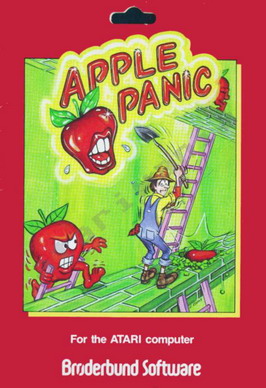
Apple Panic is a game for the Apple II programmed by Ben Serki and published by Broderbund Software in 1981. Apple Panic is an unauthorized version of the 1980 arcade game Space Panic, the first game with ladders and platforms. While the arcade original remained obscure, Apple Panic became a top seller for home computers. It was ported to the Atari 8-bit computers, VIC-20, IBM PC, and TRS-80.

Space Panic is a 1980 arcade video game developed by Universal. Predating Nintendo's Donkey Kong, and lacking a jump mechanic, Space Panic was the first game involving climbing ladders between walkable platforms. The genre was initially labeled "climbing games", but later became known as platform games. A ColecoVision port by CBS Electronics was released in the winter holiday season of 1982.
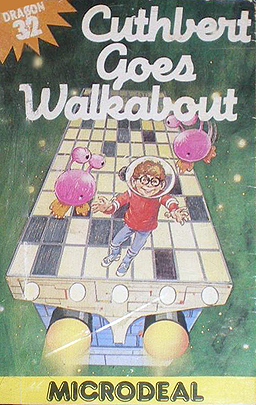
Cuthbert Goes Walkabout is a maze video game written by Steve Bak for the Dragon 32/64 and published by Microdeal in 1983. A TRS-80 Color Computer port was released in the same year. Versions for the Atari 8-bit computers and Commodore 64 followed in 1984. The game features the character Cuthbert. The game is based on the Konami arcade game Amidar.
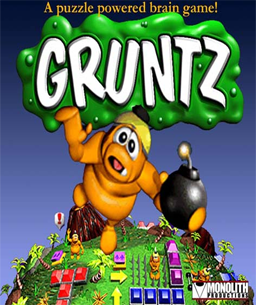
Gruntz is a puzzle/strategy game for PC, developed and published in February 1999 by Monolith Productions. It is packaged with a level editor and can be played in single and multiplayer modes.

Microdeal was a British software company which operated during the 1980s and early 1990s from its base at Truro Road in the town of St Austell, Cornwall. The company, founded by John Symes was one of the major producers of games and other software for the 8-bit home computers of the time, in particular the Dragon 32 and the similar Tandy TRS-80 Color Computer ("CoCo").

The Berlin Wall is a 1–2 player platform arcade video game released by Kaneko in 1991; two years after the fall of the actual Berlin Wall. A Game Gear version was also released exclusively in Japan; this version was going to be released in North America, but was canceled.
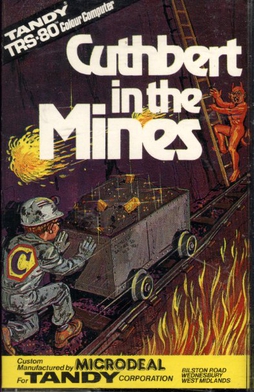
Cuthbert in the Mines is a platform game for the Dragon 32 home computer published by Microdeal in 1984. It stars Cuthbert, a character who appeared in other releases, including Cuthbert Goes Walkabout and Cuthbert Goes Digging. The gameplay is based on Frogger, but with a vertical playfield. Tandy Corporation licensed it for the TRS-80 Color Computer.
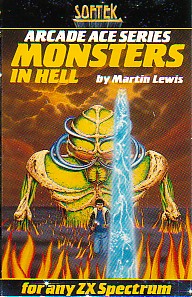
Monsters in Hell is a ZX Spectrum game written by Martin Lewis and released by Softek in 1983. The player kills wizards by digging holes in the floor to watch them plummet to their death. The screen layout and gameplay are similar to the 1980 Universal arcade game Space Panic.

Heiankyo Alien, known as Digger in North America, is a maze video game created by The University of Tokyo's Theoretical Science Group (TSG) in 1979. The game was originally developed and released as a personal computer game in 1979, and was then published by Denki Onkyō Corporation as an arcade game in November 1979. In 1980, the arcade game was released in North America as Digger by Sega-Gremlin, with minor changes in appearance.
Roland was a game character developed in 1984 by Alan Sugar, CEO of Amstrad, and Jose Luis Dominguez, a Spanish game designer. The character was named for Roland Perry, a computer engineer who worked for Amstrad. The idea was to have one recognizable character in a number of different computer games in a bid to have the Amstrad CPC compete with the ZX Spectrum and the Commodore 64.
This is a non-comprehensive list that includes terms used in video games and the video game industry, as well as slang used by players.

Roland Goes Digging is a 1984 computer game for the Amstrad CPC series of home computers. It was distributed by Amsoft, on cassette tape for CPC 464 and Amstrad's proprietary 3" disk format, for CPC 664 and CPC 6128 users. The game was developed by regular Amsoft contributors Gem Software and featured Amstrad's CPC mascot Roland, who also appears in other games in the Roland series, such as Roland in the Caves, Roland in Time and Roland in Space.

Alice in Wonderland is a graphic adventure game developed by Dale Disharoon and published by Windham Classics for the Apple II and Commodore 64 in 1985. It was remade for the Philips CD-I.

Shovel Knight Dig is a 2022 roguelite platform game developed by Nitrome and Yacht Club Games. It is an entry in the Shovel Knight franchise and a prequel to the original game. The player controls the protagonist Shovel Knight as he fights enemies and collects treasure while descending down a hole to recover his stolen treasure bag. When the player dies, they lose all obtained upgrades, returning to the surface with a fraction of the treasure they collected while playing. At the surface, they can spend treasure on a variety of items that make gameplay easier.

















